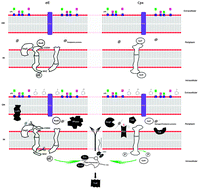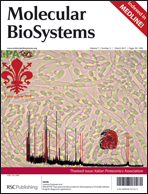In the present study, the high isoelectric point sub-proteome of Acinetobacter radioresistens S13 grown on aromatic compounds (benzoate or phenol) was analyzed and compared to the protein pattern, in the same pI range, of acetate-grown bacteria (control condition). Analyses concerned both soluble and membrane enriched proteomes and led to the identification of 25 proteins that were differentially expressed among the growth conditions considered: most of them were up-regulated in cells grown on aromatic compounds. Up to 17 identified proteins can be, more or less directly, related to the so called “envelope stress responses”: these signal transduction pathways are activated when bacterial cells are exposed to stressing environments (e.g., heat, pH stress, organic solvents, osmotic stress) causing accumulation of misfolded/unfolded cell wall proteins into the periplasmic space. For, at least, five of these proteins (a DegP-like serine protease, a peptidyl-prolyl cis–trans isomerase, a phosphatidylserine decarboxylase, a pseudouridine synthase, and a TolB-like protein) a direct induction via either the σE or the Cpx alternative signalling systems mediating envelope stress responses was previously demonstrated in Gram-negative bacteria. The proteins identified in this study include periplasmic proteases, chaperones, enzymes catalyzing peptydoglycan biogenesis, proteins involved in outer membrane integrity, cell surface properties and cellular redox homeostasis. The present study brings additional information to previous works on the acidic proteome of A. radioresistens S13, thus complementing and refining the metabolic picture of this bacterial strain during growth on aromatic compounds.


 Please wait while we load your content...
Please wait while we load your content...